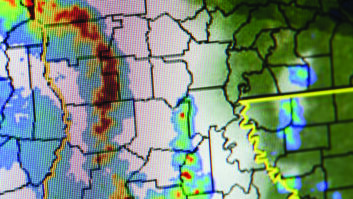After “The Bobby Bones Show” incident in October, in which a recording of a real alert using the EAN event code was used, triggering an alert that was transmitted by stations in several states, the FCC asked broadcasters how to prevent “unauthorized” alerts. The agency also sought comment on how to authenticate alerts going forward.
NAB has urged the commission to support a joint industry effort to address the issue. In filed comments, the trade lobby says that EANs, the highest level of an EAS, are intended only for EAS alerts issued by the president. FCC rules state stations must interrupt their programming and air those messages immediately after they are received.
Stations that aired the Oct. 24 message were following the correct procedures, according to NAB, which asks the commission not to pursue enforcement action against those stations that aired the bogus alert.
The larger question remains of how to “clarify” the relevant procedures and authenticate messages to prevent future occurrences remains, according to NAB, which says: “NAB understands that EAS equipment may vary in their processing of EANs with an unclear date or time, or provide users with differing capabilities and setting options. Potential solutions have been discussed on EAS message boards and Listservs, such as the periodic dissemination of verification codes as a part of a “red envelope” mechanism, changing the format of EAN date/time stamps to include the year, and establishing more uniform standards and settings for EAS boxes, among others.”
NAB notes that manufacturers issue periodic software updates, including those that may address the issue, however, “despite these efforts, improved authentication of EAS messages will persist as a critical issue until a uniform process is clarified.”
While the October incident was an isolated case by someone with little familiarity with EAS, the next time this happens it could be a “more purposeful, malicious breach,” warns NAB.
That’s why NAB believes a joint industry effort can best solve the authentication issue in a timely way and suggests the EAS-CAP Industry Group is a good model to follow.












